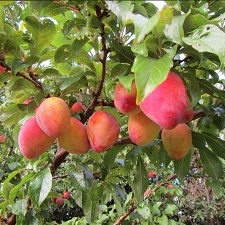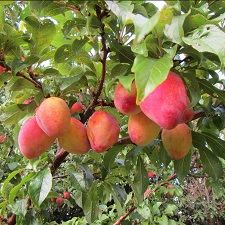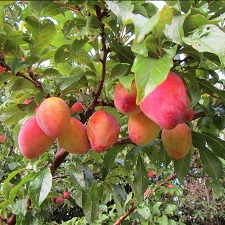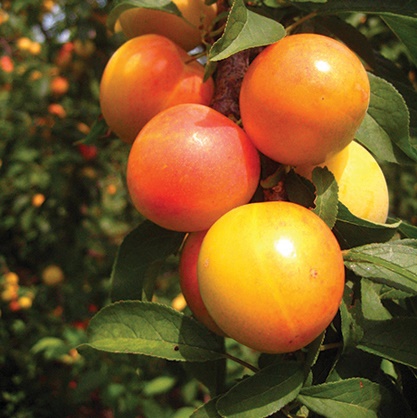Japanese Plum : LUISA Semi-Dwarf (Marianna 26-24)
$61.95
This is one of those gifts from nature that no one can take credit for developing. It appears to be a chance seedling found growing in Hamilton, New Zealand. When it started producing delicious, funny looking plums, the property owners got it checked out. After it was determined to be a unique, new variety, it was named 'Luisa' after the owner's Guatamalan grandmother. This large plum with an unusual, pointy, football shape has an attractive rosy blush over a yellowish background. Sweet and very juicy, yellow, freestone flesh has a tangy apricot edge. Luisa is ranked highly for fresh eating as well as canning and drying. Unlike many Japanese plums, it can be stored in the fridge for several months. Luisa makes an ideal backyard tree as the fruit ripens over an extended time period.
SEMI-FERTILE* | ZONE 5 | HARVEST: EARLY-MID SEPT.
.
2 reviews for Japanese Plum : LUISA Semi-Dwarf (Marianna 26-24)
Only logged in customers who have purchased this product may leave a review.





Anonymous (verified owner) –
corneliu angheluta (verified owner) –
one of 2 is not doing well so i have to get it replace ,all the tree i buy i pay grade 1 but some of them look like orchard grade !!!!!